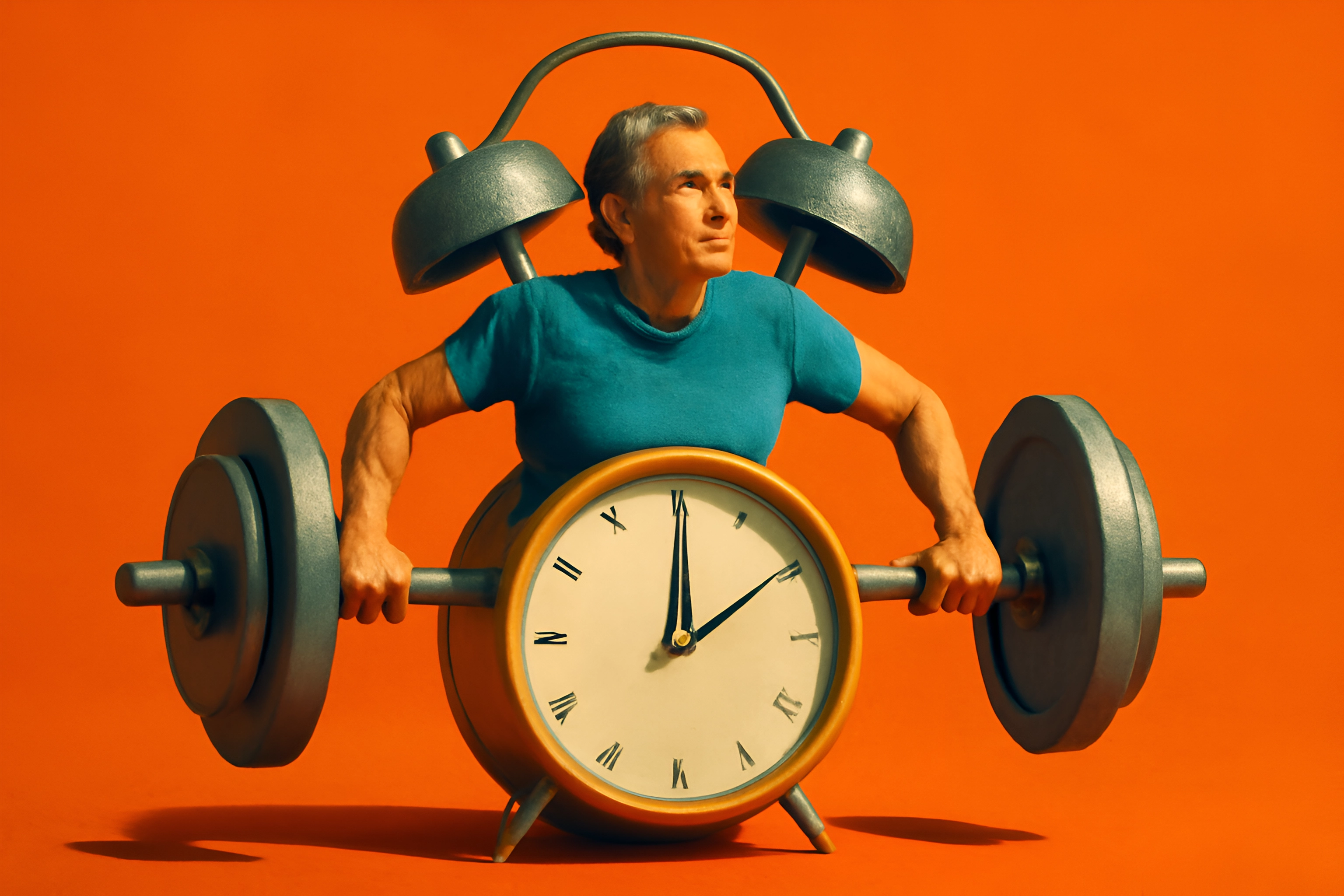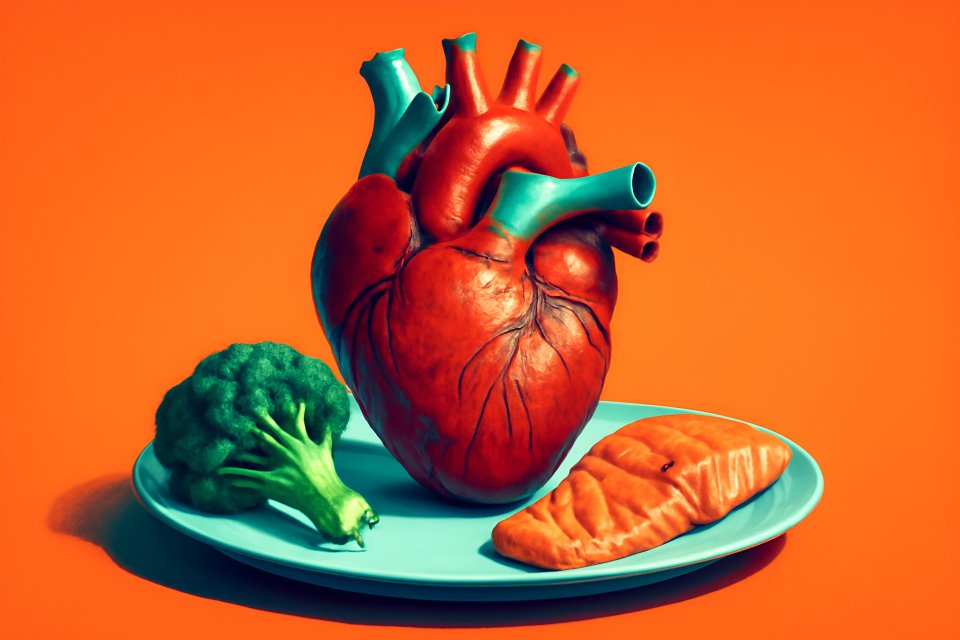
Do you remember a time when your energy felt limitless? A time when that extra slice of cake didn't immediately set up camp on your waistline? For so many of us over 50, that feeling can seem like a distant memory, replaced by a sluggish metabolism, stubborn weight, and a mid-afternoon energy slump that hits like a ton of bricks.
What if I told you there was a way to fight back? A way to work with your body, not against it, to reclaim that vitality. This isn't about another restrictive, joyless diet. It's about a powerful shift in perspective called intermittent fasting (IF)—a strategic eating pattern that focuses on when you eat, not just what you eat.
This guide is your roadmap. Together, we will demystify intermittent fasting and explore safe, effective, and realistic intermittent fasting strategies for over 50. We'll walk through the science, the methods, and the practical steps to help you tap into a new source of energy and metabolic power.
What is Intermittent Fasting (and What It’s NOT for Our Generation)
At its core, intermittent fasting is beautifully simple. It’s an eating pattern that cycles between periods of eating, known as your "eating window," and periods of voluntary fasting. You’re not starving yourself; you’re simply giving your body a structured break from constant digestion.
But let’s be crystal clear about the FitOverFifty approach. For our generation, intermittent fasting is NOT about starvation or extreme calorie deprivation. It is NOT a quick-fix gimmick for shedding pounds overnight. Most importantly, it is NOT about ignoring your body’s unique needs, especially as we navigate the hormonal shifts of midlife and beyond.
Think of it like this: you’re giving your digestive system a well-deserved vacation. When it’s not working 24/7 to process food, your body can redirect that precious energy toward cellular repair, rejuvenation, and tapping into its own fat stores for fuel. It’s a reset, not a restriction.
The Science-Backed Benefits: Why Consider Fasting in Midlife?
The buzz around intermittent fasting isn't just hype; the fasting benefits in midlife are supported by a growing body of research, particularly when it comes to our metabolic health. While some studies show that weight loss is a primary outcome, other research points to deeper, more significant changes happening inside our bodies.
Here’s what the science suggests can happen when you give your body that strategic rest:
- Enhanced Metabolic Flexibility: Fasting can help train your body to switch its fuel source more efficiently. Instead of relying solely on sugar (glucose) from your last meal, it learns to tap into stored fat for energy. This metabolic switch is a cornerstone of healthy aging, as noted in a comprehensive review from the National Institutes of Health.
- Improved Insulin Sensitivity: By giving your system a break, you can help lower insulin levels. This improves your body's sensitivity to insulin, which is crucial for managing blood sugar, preventing those dreaded energy crashes, and reducing the risk of type 2 diabetes.
- Boosted Cellular Repair (Autophagy): This is one of the most exciting benefits. Autophagy is your body’s internal cleanup crew, a process where cells remove damaged components to make way for new, healthy ones. Fasting is one of the most effective ways to trigger this essential process, which is fundamental to healthy aging.
- Potential for Better Brain Health: Feeling a bit of brain fog? Some research, including findings discussed by Harvard Health Publishing, suggests that fasting can support cognitive function and may even enhance memory.
- Supports Heart Health: A recent 2024 review found that intermittent fasting can be effective in improving several markers of cardiometabolic health. This includes potential improvements in blood pressure and cholesterol levels, which are key to maintaining a healthy heart after 50.
Getting Started: Gentle and Effective Intermittent Fasting Strategies for Over 50
Ready to give it a try? The golden rule here is to start low and go slow. The goal is sustainable, long-term wellness, not a sprint to the finish line. Forget what the 20-somethings are doing on social media; our bodies deserve a more thoughtful, gentle approach.
The Perfect Starting Point: The 12/12 Method (Circadian Rhythm Fast)
This is the ideal entry point into the world of fasting. It involves a 12-hour fasting period and a 12-hour eating window. For example, you might finish dinner by 7 p.m. and have your breakfast at 7 a.m. the next day.
This method is fantastic for beginners because it’s incredibly gentle and aligns with your body's natural circadian rhythm. For many, it simply means cutting out late-night snacking, which is a powerful health habit in itself. It’s a small adjustment that can yield significant results in how you feel.
By syncing your eating window with daylight hours, you support your body's natural hormonal cycles. This can lead to better sleep and more stable energy, making it a perfect foundation for your fasting journey. Consider pairing this with some mindful daily routines for increased energy to amplify the benefits.
Stepping It Up: The 14/10 Method
Once you’re comfortable with the 12/12 method, you might consider extending your fast slightly. The 14/10 method involves a 14-hour fast and a 10-hour eating window. This could look like eating between 9 a.m. and 7 p.m.
This small extension gives your body a couple of extra hours in that beneficial, fat-burning, cell-repairing state. It’s a great next step for those who have adapted well to a shorter fast and feel ready for more. You’re still giving yourself a generous window to get all your nutrients in without feeling rushed.
Remember, the transition should feel natural, not forced. If 14 hours feels like a struggle, simply return to the 12/12 method. The best plan is always the one you can stick with consistently.
The Popular Choice (with a Caveat): The 16/8 Method
You’ve likely heard of the 16/8 method, which involves a 16-hour fast and an 8-hour eating window (e.g., eating from 12 p.m. to 8 p.m.). While popular, it’s essential to approach this one with caution. According to the Mayo Clinic, longer fasts aren't suitable for everyone and require careful consideration.
This method can offer more pronounced benefits for some, but it can also place more stress on the body. It’s a pattern you should only attempt after you’ve comfortably mastered shorter fasts. Never jump straight into a 16-hour fast.
A special note for women: hormonal fluctuations during perimenopause and post-menopause can make our bodies more sensitive to stressors like fasting. A 2024 study noted that some participants experience hormonal changes, so it's vital to listen to your body. If you experience negative symptoms like fatigue or poor sleep, a shorter fasting window like 12/12 or 14/10 is likely a better and safer fit.
Your Practical Toolkit: 6 Tips for Safe and Successful Fasting
Making intermittent fasting a seamless part of your life is all about having the right tools and mindset. This is your "how-to" guide for making safe fasting for 50+ a success story.
- Hydration is Non-Negotiable: During your fasting window, you can and should drink plenty of zero-calorie fluids. Water is your best friend, but unsweetened herbal tea and black coffee are also excellent choices to keep you hydrated and help manage hunger pangs.
- Listen Intently to Your Body: This is the most important rule. Your body will give you signals. If you feel persistent fatigue, dizziness, or irritability, it’s a sign to stop, eat something, and reassess. This isn't a test of willpower; it's an act of self-care.
- Prioritize Nutrient-Dense Foods: What you eat in your window matters immensely. Focus on high-quality protein to maintain muscle mass, healthy fats for satiety and hormone health, and plenty of fiber from vegetables and whole grains. Make every meal count with our Age-Defying Nutrition Meal Planning Tips.
- Ease Into Your Workouts: You can absolutely exercise while fasting. Consider gentle activities like walking or stretching during your fasting window. Save more intense workouts, like strength training or low-impact cardio, for your eating window when you have fuel in the tank.
- Break Your Fast Gently: After a fast, resist the urge to dive into a massive feast. This can overwhelm your digestive system. Break your fast with a small, easily digestible meal, like a protein smoothie, a handful of nuts, or some yogurt. Our guide to Balanced Breakfasts for Seniors has some perfect ideas.
- Consult Your Doctor: This is a
CRUCIALstep. Before starting any new eating pattern, please speak with your doctor or a registered dietitian. This is especially important if you have any underlying health conditions (like diabetes) or are taking medications.
Conclusion: Your Journey, Your Pace
Intermittent fasting is not a rigid, one-size-fits-all prescription. It is a flexible, powerful tool that you can adapt to fit your lifestyle, your goals, and your body’s unique needs. The best approach is the one that leaves you feeling energized, clear-headed, and in control.
This journey is about personalizing your wellness and discovering what helps you thrive in this vibrant chapter of life. It’s about adding more life to your years and more energy to your days. You have the power to redefine your health, one mindful choice at a time.
Have you tried intermittent fasting, or are you thinking about it? Share your experiences or questions in the comments below!












